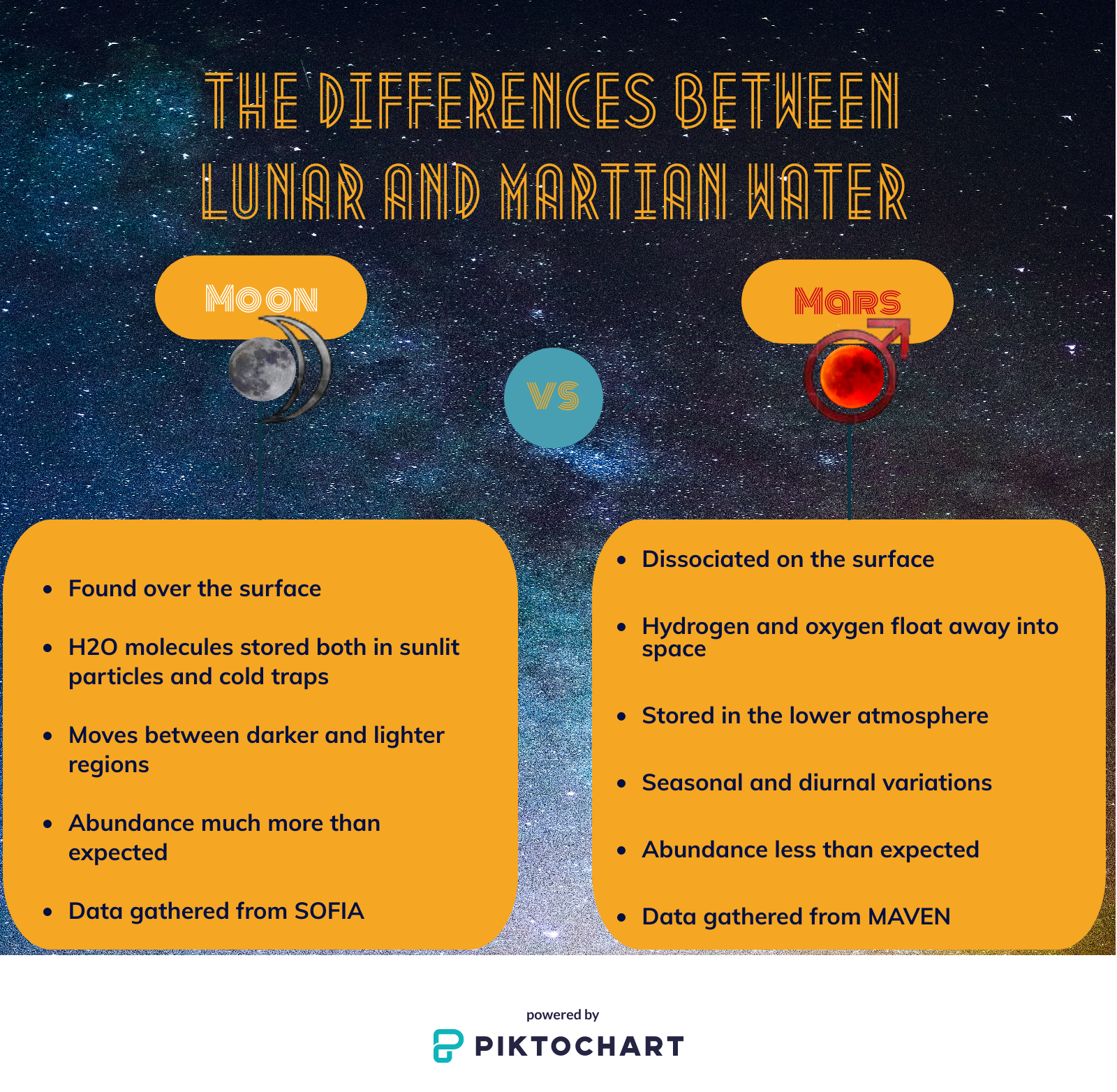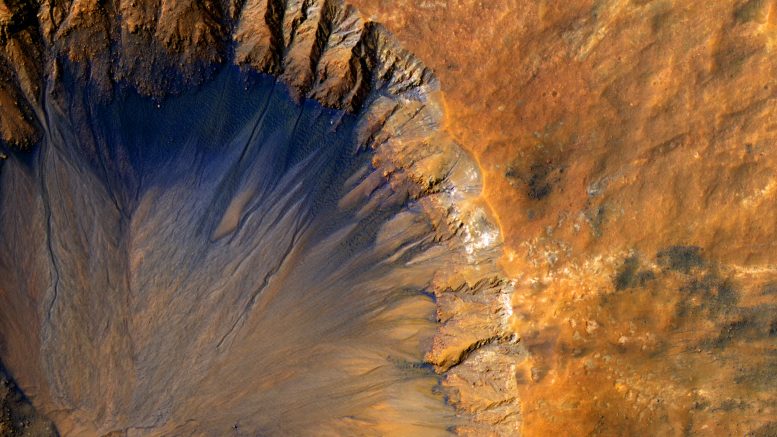Mars has lost an abundance of water resources corresponding to a hundred-feet depth for billions of years due to dust storms and seasonal modifications, among subtler phenomena in lower layers, according to a recent study funded by the NASA’s Mars Atmosphere and Volatile EvolutioN (Maven) spacecraft mission.
Shane W. Stone, a doctoral student in planetary science at the University of Arizona’s Lunar and Planetary Laboratory in Tucson who took part in the research, said for NewScientist: ‘‘If not for these escape processes, we would have a warmer and wetter planet next door to us.’’

Infographic by Kristina Hristova on Piktochart | Facts by Stone, S. et al. (2020). Hydrogen escape from Mars is driven by seasonal and dust storm transport of water. Science journal (2020) https://science.sciencemag.org/content/370/6518/824 | Photos (as they appear in order) by Nicolas Lobos (1), Juli Kosopalova (2), NASA (3), (4), and Christian Lischka (5), all on Unsplash
Scientists gathered data from Maven’s Neutral Gas and Ion Mass Spectrometer (NGIMS) between October 2014 and November 2018 – a period which equals to two Martian years.
Using NGIMS, they evaluated neutral and ionic specimen, while Maven was circulating through the Red Planet’s upper atmosphere.
The researchers observed that Martian water abundance is subject to seasonal and diurnal alterations. It reaches an apogee during southern summer near perihelion when Mars is closest to the Sun.
Mars is getting #trendy not only because of Curiosity’s selfie but also for rapidly losing its water abundance. More on the matter on our website.#mars #water #nasa #researchhttps://t.co/RnmcM0IuKj
— Voice Of London UK (@VoiceOfLondonUK) November 20, 2020
Dust storms are a significant deviation from this recurrent process, as they link to the sudden escalation in ions.
Just three weeks ago, Nasa confirmed the evidence of water on the Moon as well.

Infographic by Kristina Hristova on Piktochart | Facts by Stone, S. et al. (2020). Hydrogen escape from Mars is driven by seasonal and dust storm transport of water. Science journal (2020) https://science.sciencemag.org/content/370/6518/824; Honniball, C.et al. (2020). Molecular water detected on the sunlit Moon by SOFIA. Nature Astronomy (2020). https://doi.org/10.1038/s41550-020-01222-x; Hayne, P. et al. (2020). Micro cold traps on the Moon. Nature Astronomy (2020). https://doi.org/10.1038/s41550-020-1198-9 | Photos by Neven Krcmarek (left) and Luca Ruegg (right) on Unsplash
A previous study by Professor Takashi Mikouchi at the University of Tokyo suggested that the formation of water on the Red Planet might have been an indigenous occurrence.
Words: Kristina Hristova | Subbing: Zakia N

